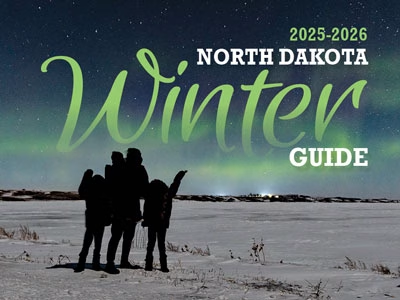As we find ourselves at the end of October and into early November, the growing season has ended and nearly all farmers’ markets have ceased across the state.
It’s always a bittersweet day when you attend your last farmers’ market. You’re sad that you won’t be coming back next week, but happy that you’ll be able get a much deserved break.
Most of the general population believes that farmers’ market vendors turn off a switch at the end of the season, but that couldn’t be further from the truth. There are plenty of things to do, they just aren’t as physical as weeding and harvesting, or getting up at 3 a.m., to start baking.
Crunch the numbers, order supplies for next year, put items in storage, thoroughly clean your equipment, if you’re organic, plot next year’s rotation and here’s the best part, attend the farmers’ market and growers convention.
The North Dakota Farmers’ Market and Growers Association is in a unique position and is unlike other states that have similar organizations. It was once an arm of the North Dakota Department of Agriculture, but as the association grew, it split off and became its own entity.
But the Department of Agriculture continues to be a partner and plays a vital role in the operation. It has a local foods specialist whose job it is to work with markets and vendors to help them become successful.
The other part of this equation that is unique is in the Entrepreneurial Center for Horticulture at Dakota College in Bottineau. When the association got its own identity, ECH was there as well, just like the Ag Department to help a growing number of markets succeed.
In recent years that growth has tapered off but those that remain are quite stable thanks to both the ECH and the Ag Department.
And when the convention rolls around, both are there playing a major role in the two-days of meetings, seminars, keynotes and networking.
Having been a farmers’ market vendor for 17 years, I’ve run across a lot of people who don’t go and they have a variety of, I’ll call them excuses. “I’m not paying the fee,” “it’s too far to drive,” “I already know how to grow potatoes,” and “nobody’s going to tell me how to grow vegetables.”
Truth be told, and this is the reason I’m writing about this topic, is because the educational opportunities that are presented at this convention every year, are incredibly helpful.
Since 2005, I’ve missed one annual convention in Minot and that was because I was on military active duty at U.S. Central Command. I’ve gone every other year for the educational opportunities, because let’s face it, we never stop learning.
And in order to be successful at this kind of work, you have to embrace the wisdom of those teaching the classes because they know what they are doing for obvious reasons.
The best example I can provide is that of a family that recently moved to North Dakota from central Oregon. I was told these folks can grow anything, as long as it’s in central Oregon, which would be the equivalent latitude of Rapid City, S.D., or Rochester, Minn., at 44 Degrees North Latitude.
In addition, Oregon is somewhat moderated by the Pacific Ocean currant.
As a result, this family wants to find out all they can about growing garden produce between the 48th and 49th parallels. And for that reason, they are very excited about attending their first North Dakota Farmers’ Market and Growers Association convention.
They want to learn all they can about growing in northern North Dakota and this event, coming up in February, will do just that.












